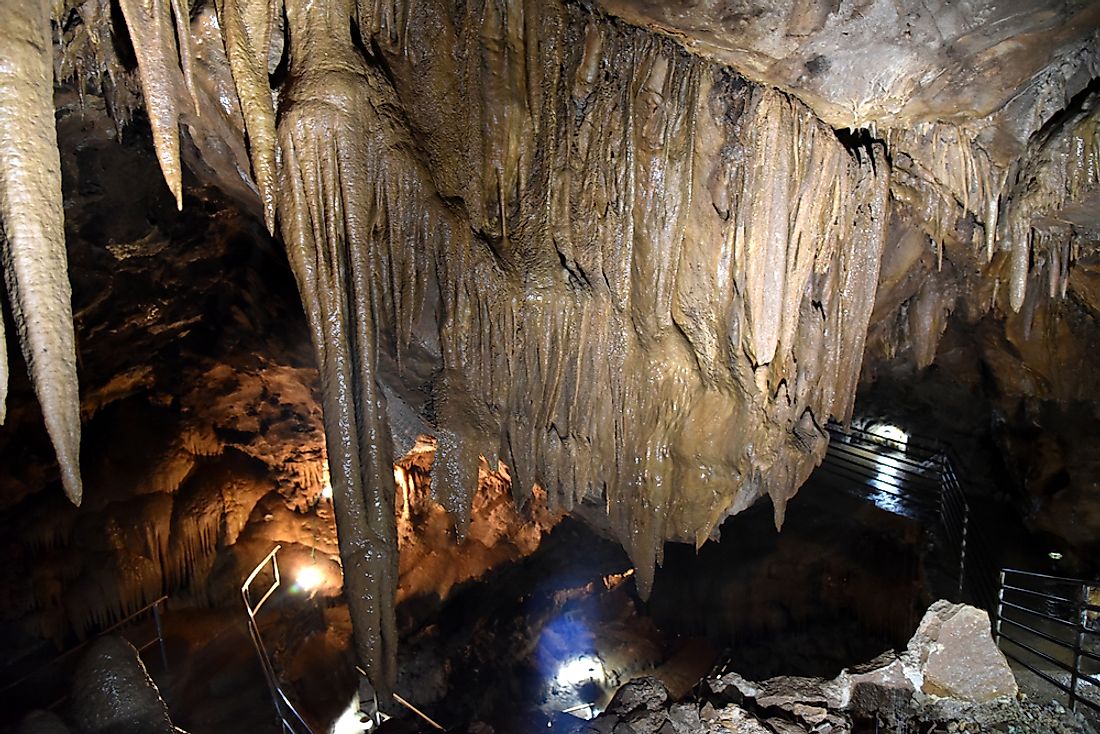What Is A Flowstone?

What Is A Flowstone?
Flowstones are a type of speleothem found on the walls and floors of caves. These are typically sheetlike deposits of carbonate minerals like calcite. Flowstones are formed by water flowing along the cave floor or wall and are most common in solution caves. Flowstones found outside of cave environment are classified as calthemites and play a role in the degradation of concrete. Flowstones are usually translucent or white in color. Occasionally, they might be stained by other colors depending on the minerals deposited by the water.
How Are Flowstones Formed?
Water often flows down the walls of caves and along the sloping floors of caves. If this water carries dissolved minerals, it might deposit the minerals on walls and floors and these deposits will soon develop in layers to form flowstones. Calcium carbonate, gypsum, aragonite are some of the common minerals deposited as flowstones. The minerals are deposited when water releases the carbon dioxide dissolved in it, a process called degassing. The process occurs through the mechanism of agitation. Once water loses dissolved carbon dioxide, it can no longer hold the carbonate minerals in solution and hence deposits them on the cave surface along which it flows.
Significance Of Flowstones
Flowstones are good indicators of past hydrology of a place and help to identify periods of past droughts. Since flowstones require some form of water to develop, the absence or presence of these speleothems and their detailed structure indicates the water availability status of the area. Flowstones often serve to enhance the beauty of a cave and are said to have ornamental qualities.
Flowstones In Concrete
Like stalactites and stalagmites, flowstones are also found outside cave environments on manmade structures. Such flowstones are formed from lime, concrete or mortar. The chemical reactions involved in such cases are usually different from those involved in flowstone formation in caves. When calcium ions leak out from degrading concrete, carbon-dioxide is absorbed into the leaked solution to form calcium carbonate which gets deposited on sloping or vertical surfaces to form flowstones. Such flowstones found in man-made environments are called calthemites.











